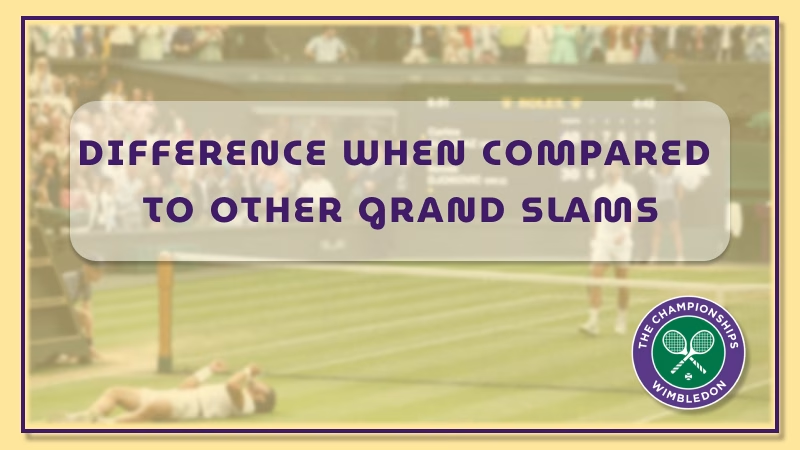Introduction

The Wimbledon Championships are the showpiece event in world tennis. One of those events that happens year in and out is the Wimbledon, at the England Club in London where players and fan converge on center court to enjoy tennis action as history meets tradition on marvelous grass courts. One of the biggest attractions about Wimbledon is how much prize money you can win at Wimbledon. Among other things, we will cover the following: – What is Wimbledon 2024 prize money and why is it important in tennis?- Which role does this sum of cash play for a player, economy & sports itself.
The significance of Wimbledon prize money extends beyond just the physical cash – it is a testament to how important and prestigious the tournament truly is in tennis. The All-Star game sees player from across the world compete for their slice of prize money and legacy with fans hoping to see more new greats like before. Competing for prize money is a massive reason many decide to enter the fray at Wimbledon, but it adds all sorts of further intrigue and fuel to this event.
Total Prize Money for 2024

With 2024, the total prize money for Wimbledon is expected to hit all-time record levels highlighting their position as one of the premiere tournaments in Tennis world. Overall prize money will top previous years, a nod to the financial health of and increasing demand for this event. Wimbledon is forecasted to hands over well more than GBP40 million in prize money by the time 2024 rolls around, which represnets multi-million dollar spike from what has ever been offered before. The increase further underlines Wimbledon’s goal to lure the best players and pay them for their efforts.
Prize money at Wimbledon has grown for a number of reasons, depending on who you consult: augmented earnings from broadcasting rights and sponsorships; rising ticket sales. With the tournament increasing its popularity each and every year, that demand from fans has also bumped up paydays for players – just one of many reasons why Wimbledon is a premier event on the tennis calendar. This is all based on Wimbledon’s financial success this year, which allowed it to ramp up that prize money pool at a time when ATP and WTA players are growing increasingly restless with the way their sport has turned them into travelling circus performers.
Here we compare the total prize money for 2024 and historical years to see how Wimbledon has changed over time. Over the past few years, there have been many improvements in prize money being given by The Tournament as it has always stood head and shoulders above any other tournaments. The increasing prize money is another sign of how Wimbledon has prioritized high financial rewards for its players, which is why the event remains a magnet to top talent across the globe.
Breakdown by Event

In Wimbledon 2024, the prize money will be awarded in different series of events. The prize-money distribution per event is further evidence of the tournament’s appeal to players across all formats and levels, including singles, doubles and mixed. The breakdown gives a good idea as to how the purse is split between various events at Wimbledon, guaranteeing that every category has more than enough financial stimulus for competitors.
The singles events are the obvious focal points of any Wimbledon – that’s where all the thrills and spills take place, after all. This is to be contrasted with significantly sized prize money for the winners of both Wimbledon’s men and women singles events, which offer a huge sum given their prestigious history & difficulty. Male and female singles winners have the greatest portion of prize money, which varies between millions of pound. This huge prize does not only reward their achievements but also undoubtedly serves to launch them into future prosperity and career success.
The holder-up, also gets quite an ontogeny thank-you-ee web across the distress of demonstrating their ability to jazz reached a past table. Although they did not win, their efforts are honored and given a huge financial reward. And a run to the semi-finals at Wimbledon also pays out handsomely, showcasing how good an effort it is just making it deep into the tournament. The winnings help to finance the athletes and encourage them to continue competing in top-class tournaments.
Wimbledon Doubles bring an element to tennis that you do not necessarily find from Singles Play. The aspects of teamwork and strategy are on display with every point as players combine efforts unlike in the singles game or any other sport which sees this type of partnership down to one miss step. Although the doubles events are not as high-profiled as singles for example, they provide a total of tremendous prize money which shows that teamwork and skill in this format is very important. This is a big reward for winners that demonstrate the value of playing together and showcase just how hard it can be to play doubles.
The runners-up in the doubles events are compensated, too — a nod to having reached that final and played at an elite level. As alluded to earlier, winning a doubles event pots players some pretty hard cash which financially benefits career doublesists and gives them an incentive going forward in the competition.
Prize Money Distribution

The reward system behind Wimbledon’s prize money structure provides the lower ranked players with relatively high payouts even if they do not make it past first round. As a result, most of the prize money is distributed across rounds to show just how competitive it really is and encourages players to play at their highest level in order advance through the biggest stages. With that knowledge, you can understand from where the prize money comes and create an image of how lucrative it is for a sportsman and play around with its format.
Wimbledon, for example, pays prize money to players all the way through first-round losers and raises those amounts as a player advances. This pyramidic structure ensures that most people can get something out of their participation, even if they do not make it to the later stages. Prize Money DistributionThis prize money distribution rewards the players of their effort at each stage by providing financial incentives for playing each match. This guarantees that every player wants to try their best, even if they are near the bottom of a tournament bush.
The tournament is committed to recognizing player’s hard work and dedication by spreading prize money across rounds. Wimbledon gives players a reason to compete, and perform their best… at every stage of the tournament by providing financial incentives. It forms a system that plays in to the competitive and exciting environment by giving players motivation to move up rounds for greater financial gain.
As they progress into each round, players will also benefit from a hefty boost to the prize money. The more incremental path of this tournament seems to encourage everyone at the event to be at their best and make it as far into the bracket as they possibly can. These financial rewards are not only a goal for the dedication and skill shown by players; they also act as motivation to do whatever it takes in order to succeed.
Historical Context

Comparing the figures from Wimbledon through the years only serves to remind how far has come a long way in terms of Tennis competitions and who it is now being played amongst. Prize money has risen at Wimbledon over the years to reflect these developments and its position as one of tennis’s ultimate grand slam titles.
Prize money at Wimbledon has rocketed from the days when white blouses and panama hats nearly sufficed as kits for male players. In the beginning, players played for the honor of being a champion over making an absolute fortune. However, as the sport professionalized and began to draw massive audiences Wimbledon raised its prize money in order to attract a higher caliber of player from not only Britain but around the globe.
The Open Era of tennis began in 1968 when the professional players were admitted to participate in Grand Slam events. This was the beginning of dramatic rises in Wimbledon prize money. By the 1980s, it offered significant financial prizes to competitors and had become part of the professional game’s appeal for sponsors.
In recent years, Wimbledon has also announced all-time high prize money funds — reinforcing the tournament’s trademark as a first among equals in professional tennis. In 2024, Wimbledon is planning to take an overall prize money pool beyond GBP 50 million and it speaks volume about their continued growth as a financial behemoth of tennis. This year’s change in prize money reflects Wimbledon’s continued commitment to players while also exalting the prestige of the event.
Wimbledon has gone through significant prize money distribution changes and milestones throughout history. In 2007, the Wimbledon Championships announced that they would also award for equal prize money (male and female) total allocations. This made them only one of a few other Grand Slam tournaments which have brought implemented financial gender equality as well to their respective events. It was a pivotal moment in the history of the tournament, reflecting societal shifts and an increased appreciation for what female athletes brought to the table.
Impact of Prize Money

Wimbledon prize money is a big deal for tennis players, important to their bottom line and how they prepare their careers. The tournament offers extensive rewards that not only serve as reflections of the accomplishments or inactions by players but also shape patterns for participation and competition.
The prize money from Wimbledon is an important piece of the pie for many players The financial incentives can go a long way in enabling them to continue playing professional tennis by helping fund travel, coaching and equipment costs. The prize money itself can offer financial flexibility and growth potential for players who make it deep in the tournament.
With prize money being distributed over each round, it means that even those who fail to make the finals can still earn valuable extra cash. This method allows them to extend their services towards many more players hence enabling a common approach that emboldens these talents into following through with careers. The impact of Wimbledon’s prize money reaches far beyond individual players, helping to drive the broader growth and sustainable development of professional tennis.
The money at stake at Wimbledon is crucial, not only in luring the elite – but also to bolstering competition. With that being said the rewards are huge and this is where Wimbledon has an advantage as they pay more across all areas which is a big incentive for players to make sure it fits into their schedule, meaning only the best in the world tend to take part.
Difference When Compared to Other Grand Slams

One of the critique people usually have is how prizemoney at Wimbledon compares with other Grand Slam Championships such as the Australian Open, French Open Transit and US open. Each of these events has a slightly unique take on how prize money is distributed, and that’s affected by things like location championships based on geography, sponsorships support from brands dedicated to dance in certain regions or countries which leads them towards hosting regional competitions with large payouts, as well the source of revenue for each event.
The prize money is one of the highest for grand slams on tour, showing its status as one of the most prestigious events in tennis. The specific figures may fluctuate from year to year but each of the Grand Slams comes with a huge prize purse that more than makes up for every player’s efforts on court.
Though, the distribution of prize money is entirely that much single track and there are some stark differences between rewards in various events or rounds. Wimbledon puts a significant amount of money in the hands of all players at every stage, so even those who don’t make it to the finals also get good payout.
Other Grand Slam tournaments follow similar policies, but each one has its own way of seducing players to take the court. But really, you just need to look at how little the champions earn here compared to other Grand Slams in order to get a sense of what’s important and not when hundreds of millions are invested elsewhere.
Prize money of a major Open is considerable helps in deciding which to play: shift into another alternation due based on ranking system The distribution of prize money towards the early round losers for example may differ between tournaments and impact player decisions on what events to focus.
Notable Winners
In all of those triumphs at Wimbledon, one countrywoman or another and a crowd chanting her name are by far the most unremarkable elements. Not only will the three be rewarded with prize money that reflects their status as champions of this tournament, but they have also preserved their place in tennis history.
Wimbledon major winners, like Novak Djokovic and Serena Williams, have historically made big money because of their sustained success on grass. In return for their extraordinary performances, these players have been compensated rather handsomely as they earned life-changing sums of money and exhaustively written themselves into the annals of history.
The men’s and women’s singles champions in 2024 will take home GBP two million underlining the price of success. The huge prize money reflects the financial rewards available to competitors who triumph at Wimbledon, and that attend success.
Wimbledon is a career-defining achievement for many players, one that brings not only financial reward but adds to their international profile and status. The money they bring in from Wimbledon shows their years of hard work, devotion and talent; wins that can support them ultimately reach their goals within the sport.
The wins of well known champions that won last year will certainly go down in history as not only have they been able to break into the prize money, but also caused a stir with their fight for more experience. The pinnacle of a tennis player’s career Winning at Wimbledon is no mean feat for any pro.
Economic Impact

Prize money at Wimbledon reverberates through the economy, affecting not only players but having some influence over local business and how well the tournament is perceived. More than just support for the hosts, financial rewards offered at Wimbledon go far beyond its gates generating revenue and economy footprint in a variety of industries.
Wimbledon brings a lot to the local economy in terms of overseas visitors, but there are 82 other Grand Slams which contribute nothing. Fans, media and freeloading players (re: Woods) flock to the area like migratory birds on a neatly mapped out flyway bringing humongous revenues for local hotels, restaurants transportation services including retail outlets etc..
Like-wise the economy flow of wembledon prize money to local community by creating jobs and supporting some other locals enterprises. The economic success of the tournament provides an investment in that community, making it more viable as a tourist and business destination.
Wimbledon’s economic strategy also helps to attract sponsors and partners who help make the tournament a financial powerhouse of sport, with prize money playing its part in that process. Wimbledon remains one of the most prestigious events in tennis and incentives such as large financial rewards are a massive draw for high flying talent.
